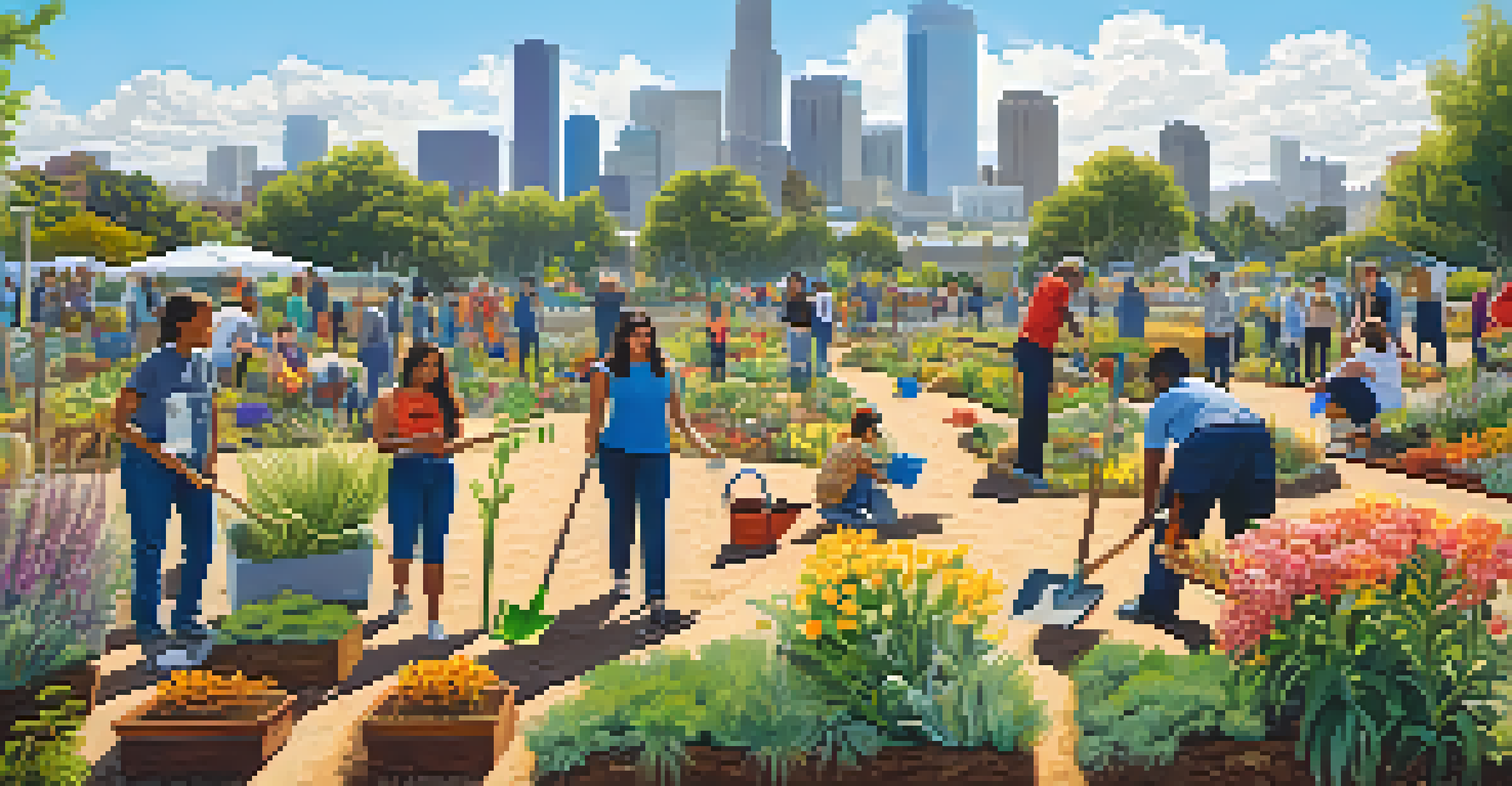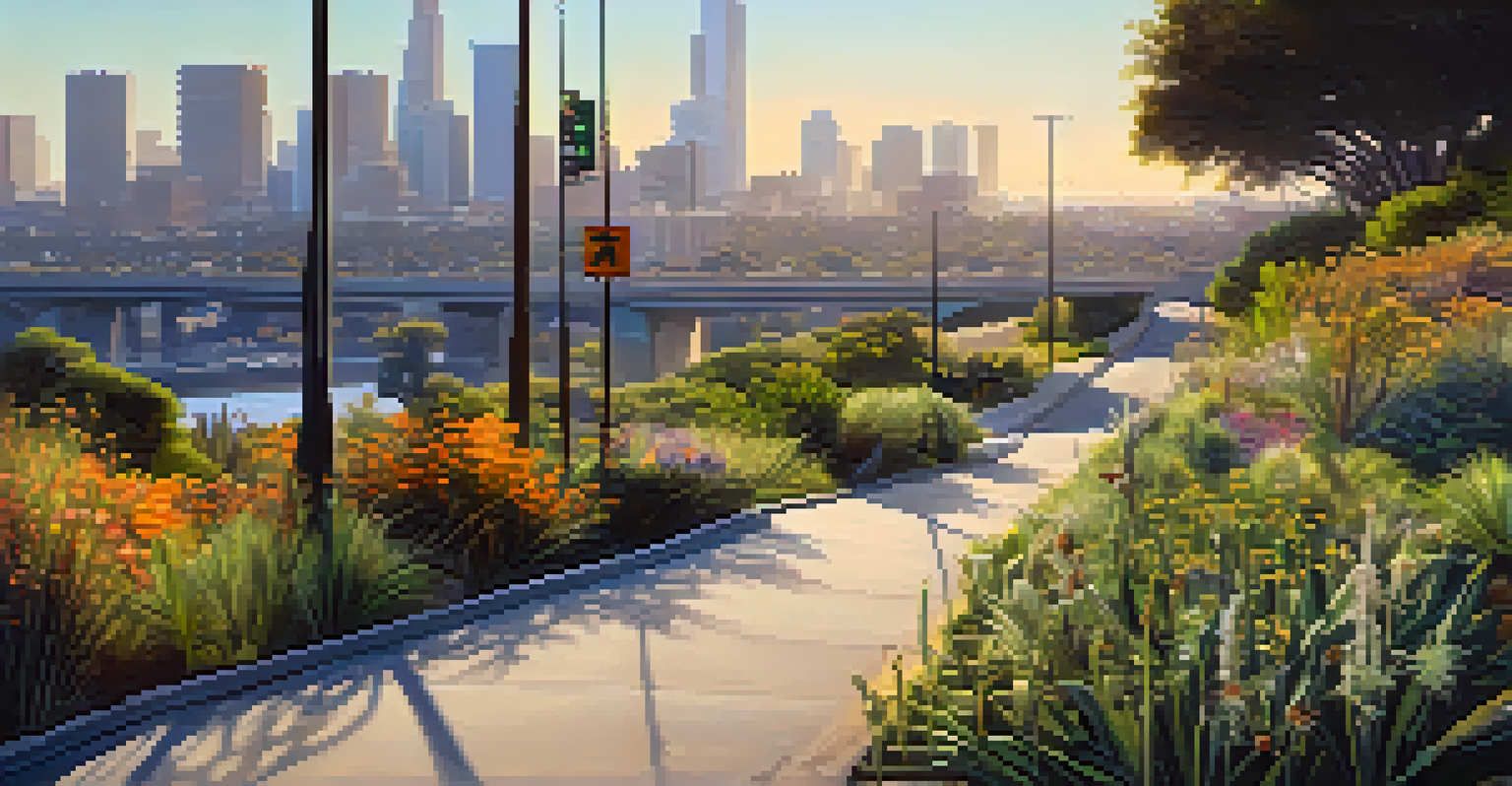Conservation Strategies for LA's Endangered Urban Species

Understanding LA's Unique Urban Ecosystem
Los Angeles is a sprawling urban jungle, where concrete meets nature in fascinating ways. This unique environment is home to a variety of endangered species, including the coastal California gnatcatcher and the Western snowy plover. These animals face challenges from habitat loss, pollution, and urban development, making conservation strategies essential. Understanding the interplay between urban living and wildlife preservation is the first step toward effective action.
In every walk with nature one receives far more than he seeks.
The city’s diverse ecosystems, ranging from beaches to mountains, create a rich tapestry of habitats. However, these areas often overlap with human activities, leading to conflicts between urban growth and wildlife needs. For example, the expansion of urban areas can encroach on the nesting grounds of sensitive species. This highlights the importance of tailored conservation efforts that consider both urban development and ecological integrity.
Moreover, public awareness plays a crucial role in conservation. When residents understand the value of their local wildlife and the threats these species face, they are more likely to support conservation initiatives. A well-informed community can work alongside government and non-profit organizations to create a more sustainable urban environment.
Habitat Restoration: Reviving Endangered Spaces
Habitat restoration is one of the most effective strategies for conserving endangered species in urban environments. In Los Angeles, projects like the Los Angeles River Revitalization have aimed to restore natural habitats that have been damaged by urbanization. By reintroducing native plants and removing invasive species, these projects help create a more conducive environment for wildlife, allowing endangered species to thrive.

For instance, restoring wetlands can provide crucial breeding and feeding grounds for various bird species. These areas act as natural filters, improving water quality while also serving as habitats for fish and other wildlife. The success of such restoration projects often hinges on community involvement, which can foster a sense of ownership and responsibility towards local wildlife.
Urban Wildlife Needs Attention
Understanding the balance between urban development and wildlife preservation is crucial for protecting endangered species in Los Angeles.
Additionally, habitat corridors—connective strips of land that link fragmented habitats—play a vital role in allowing wildlife to move safely between areas. Establishing these corridors in urban settings can help mitigate the effects of urban sprawl and give endangered species the space they need to survive. It’s a reminder that nature’s resilience can flourish even in densely populated areas when given the right support.
Community Engagement: Mobilizing Local Support
Community engagement is key to the success of conservation strategies in urban settings. In LA, local residents can play a pivotal role by participating in conservation programs, volunteering for clean-up events, or joining citizen science projects. This hands-on involvement not only helps endangered species but also fosters a sense of community and connection to nature.
The greatest threat to our planet is the belief that someone else will save it.
Education is another cornerstone of community engagement. Schools, non-profits, and local organizations can organize workshops and events to teach residents about the importance of preserving local wildlife. For example, programs that involve children in planting native gardens can instill a lifelong appreciation for biodiversity and environmental stewardship.
By creating a culture of conservation, communities can push for policy changes that protect urban wildlife. When residents advocate for sustainable practices and support local conservation efforts, they contribute to a broader movement to safeguard endangered species. Together, these collective actions can lead to significant improvements for LA's urban ecosystems.
Legislation and Policy: A Framework for Protection
Effective legislation is crucial for the protection of endangered species in urban areas like Los Angeles. Policies that regulate land use, habitat protection, and wildlife corridors can significantly impact the survival of local species. For example, laws that enforce the preservation of natural habitats during urban development can prevent further habitat loss and fragmentation.
Organizations like the U.S. Fish and Wildlife Service play a vital role in enforcing the Endangered Species Act, which provides a framework for protecting threatened and endangered species. By collaborating with state and local governments, these organizations can help implement conservation strategies that balance urban growth with ecological health. This partnership is essential for achieving long-term conservation goals.
Community Engagement Drives Conservation
Local residents actively participating in conservation efforts can significantly enhance the protection of endangered species and their habitats.
Moreover, public participation in the policy-making process can amplify the voices of those advocating for endangered species. When citizens engage with local representatives and express their concerns, they can influence decisions that affect wildlife conservation. Ultimately, strong legislation combined with community advocacy paves the way for a more sustainable future for LA's urban wildlife.
Urban Planning: Integrating Wildlife Needs
Urban planning plays a critical role in addressing the needs of endangered species in Los Angeles. By incorporating wildlife considerations into city planning, urban developers can create spaces that are not only functional for humans but also supportive of local ecosystems. This can include the design of parks and green spaces that provide habitats for native species.
For instance, implementing green roofs and vertical gardens can help mitigate urban heat while providing crucial habitats for birds and insects. These innovative designs promote biodiversity and can enhance the quality of life for residents. Additionally, integrating wildlife crossings in urban infrastructure can help prevent animal-vehicle collisions, ensuring safer passages for local wildlife.
By prioritizing ecological considerations in urban development, cities can achieve a balance between growth and conservation. This integrative approach fosters a healthier urban environment where both people and wildlife can thrive. Ultimately, thoughtful urban planning can be a game-changer for LA’s endangered species.
Research and Monitoring: Assessing Conservation Efforts
Research and monitoring are essential components of effective conservation strategies. In Los Angeles, scientists and conservationists conduct studies to assess the health of endangered species populations and their habitats. This data informs conservation efforts, helping to identify which strategies are working and which may need adjustments.
For example, tracking the movements and behaviors of endangered species can provide insights into their habitat preferences and threats they face. By understanding these dynamics, conservationists can tailor their approaches to better meet the needs of specific species. Additionally, long-term monitoring can help evaluate the success of restoration projects and inform future initiatives.
Effective Policies Ensure Survival
Strong legislation and community advocacy are essential in creating a framework that supports the conservation of endangered species in urban environments.
Collaboration between researchers, government agencies, and local communities enhances the impact of conservation efforts. When everyone works together, sharing knowledge and resources, the results can be more effective. This collective approach to research and monitoring helps ensure that conservation strategies remain relevant and impactful in the face of changing urban landscapes.
Future Outlook: Building a Sustainable Urban Ecosystem
The future of LA’s endangered urban species relies on the collective efforts of individuals, communities, and organizations. As urbanization continues to rise, it’s essential to prioritize conservation strategies that protect the fragile balance between nature and development. By implementing effective policies, engaging communities, and restoring habitats, we can create a sustainable urban ecosystem.
Innovative solutions, such as smart city planning and green infrastructure, can enhance urban resilience while benefiting local wildlife. For example, creating more parks and wildlife sanctuaries within the city can provide safe havens for endangered species. These spaces not only support biodiversity but also offer recreational opportunities for residents.

Ultimately, fostering a culture of conservation in Los Angeles will require ongoing commitment and collaboration. As more people become aware of the challenges facing urban wildlife, the potential for positive change increases. Together, we can build a brighter future for LA’s endangered species and ensure their survival for generations to come.